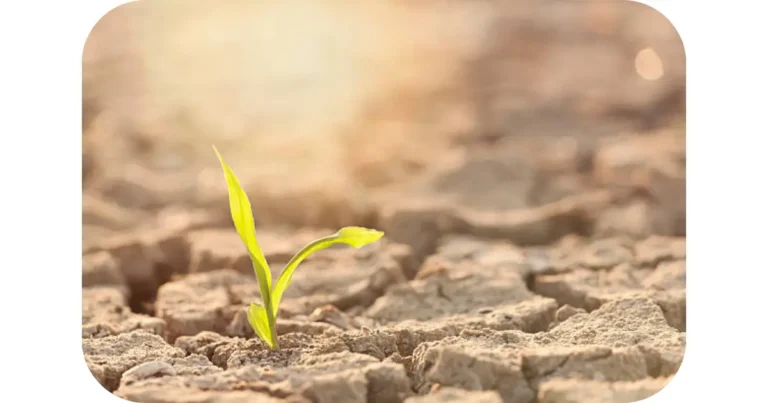Land Scarcity: Why Hydroponics Is a Powerful Solution
Table of Contents
ToggleIntroduction
Land scarcity is a growing global concern, driven by rapid urbanization, population growth, and climate change. As fertile land becomes increasingly limited, traditional farming struggles to meet rising food demands. This is where hydroponics emerges as a revolutionary solution. By allowing crops to grow without soil, hydroponics offers a sustainable, efficient, and space-saving alternative to conventional agriculture. In this blog, we will explore why hydroponics is a powerful answer to land scarcity and how it can shape the future of food production.
Understanding Land Scarcity
Land scarcity refers to the diminishing availability of arable land for agriculture. Several factors contribute to this crisis, including:
Urbanization
Expanding cities encroach upon farmland, reducing available space for cultivation.
Deforestation
The clearing of forests for industrial and residential use shrinks agricultural land.
Climate Change
Unpredictable weather, soil degradation, and desertification make many regions unsuitable for farming.
Population Growth
With more mouths to feed, the demand for food is increasing while the land for production is decreasing.
What is Hydroponic Farming?
Hydroponics is a method of growing plants without soil, using nutrient-rich water solutions instead. This technique can be implemented in various settings, from indoor farms and greenhouses to vertical farming systems. Hydroponics maximizes space efficiency while reducing dependency on traditional farmlands.
- Deep Water Culture (DWC): Plants are suspended in nutrient-rich water.
- Nutrient Film Technique (NFT): A thin film of nutrient solution continuously flows over the roots.
- Aeroponics: Plant roots are misted with a nutrient solution for maximum absorption.
- Drip System: Nutrient solutions are delivered to plants through a controlled drip mechanism.
- Ebb and Flow System: A timed system that floods and drains nutrients to plant roots.
How Hydroponics Addresses Land Scarcity

Maximizes Space Utilization
.
One of the biggest advantages of hydroponics is that it allows crops to grow in vertically stacked layers, reducing the need for expansive land areas. This is particularly beneficial in urban settings where space is limited. Rooftops, warehouses, and even abandoned buildings can be converted into productive hydroponic farms.
No Dependency on Fertile Soil
.
Traditional farming depends on soil quality, which varies across regions. Hydroponics eliminates this constraint by providing essential nutrients directly to plants through water. This means crops can be grown anywhere, including arid and non-arable lands.
Higher Yield in Less Space
.
Hydroponic farming produces higher yields compared to traditional farming because plants receive optimized nutrients, water, and oxygen. Growth cycles are faster, and multiple harvests per year are possible, making it an efficient way to use limited land.
Reduced Dependence on Arable Land
.
With soil degradation being a pressing issue, hydroponics eliminates the need for fertile land. This method allows farming in regions with poor soil conditions, ensuring food production in areas previously unsuitable for agriculture.
Water Efficiency
.
In traditional agriculture, large amounts of water are lost through soil absorption and evaporation. Hydroponics uses up to 90% less water since it recirculates nutrient solutions, making it an eco-friendly solution to both land and water scarcity issues.
Urban and Indoor Farming Potential
.
With hydroponics, food production can be integrated into cities, reducing transportation costs and ensuring fresher produce. This makes urban farming viable, even in regions where land for agriculture is scarce or non-existent.
Environmental Benefits of Hydroponics
Beyond addressing land scarcity, hydroponics also contributes positively to the environment:
- Reduces Land Degradation: Since hydroponics does not rely on soil, it prevents issues like erosion and nutrient depletion.
- Eliminates Pesticides and Herbicides: Controlled environments minimize the need for harmful chemicals.
- Lowers Carbon Footprint: Local hydroponic farms reduce the need for long-distance transportation, cutting greenhouse gas emissions.
Challenges of Hydroponics and Future Potential
While hydroponics presents a strong case for addressing land scarcity, some challenges remain:
- Initial Investment Costs: Setting up hydroponic systems requires capital for equipment, infrastructure, and technology.
- Technical Knowledge: Farmers and growers need training to manage nutrient solutions and system maintenance.
- Energy Consumption: Some hydroponic setups rely on artificial lighting, which can increase energy use unless renewable sources are utilized.
However, as technology advances, costs are decreasing, and more sustainable energy options are being integrated into hydroponic farming. Governments and private enterprises worldwide are recognizing its potential and investing in research and development.
-
Bacteria: The Remarkable Role of Microbes for Growing Plants in Hydroponics
-
Hydroponics: The Rookie Mistakes of Growing Plants
-
Chlorine: The Incredible Key to Thriving Hydroponic Plants
-
Molybdenum: Astonishing Importance for Hydroponic Plant Growth
-
Boron: The Astonishing Importance for Plants Growing in Hydroponics
-
Copper: A Powerful Element for Hydroponic Plant Growth
-
Zinc: The Powerful Secret to Hydroponic Plant Growth
-
Manganese: Essential role for Hydroponic Plant Growth
-
Iron: The Crucial Role of Iron in Hydroponic Plant Growth
-
Sulfur: The Vital Key to Thriving Hydroponic Plant Growth
-
Magnesium: The Crucial Role for Thriving Hydroponic Plants
-
Calcium: The Critical Importance for Thriving Hydroponic Plants
Conclusion
Hydroponics is a ground breaking solution to land scarcity, offering a way to cultivate crops without the need for vast agricultural lands. By utilizing space efficiently, eliminating soil dependence, and producing high yields with minimal resources, hydroponics is shaping the future of sustainable food production. As urbanization and climate change continue to impact land availability, hydroponic farming presents an innovative, eco-friendly, and viable path forward. Investing in hydroponics today can help secure food security for generations to come.

